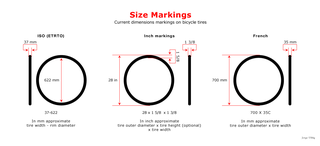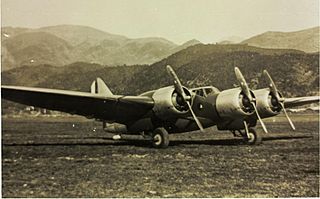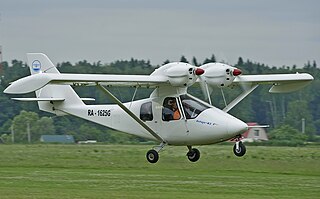Related Research Articles

A chair is a type of seat, typically designed for one person and consisting of one or more legs, a flat or slightly angled seat and a back-rest. They may be made of wood, metal, or synthetic materials, and may be padded or upholstered in various colors and fabrics.

The 400 series (400系) was a Japanese Shinkansen high-speed train type operated by East Japan Railway Company between 1992 and 2010 on Tsubasa services on Japan's first mini-shinkansen line, the Yamagata Shinkansen branch from the main Tohoku Shinkansen.

Giant slalom (GS) is an alpine skiing and alpine snowboarding competitive discipline. It involves racing between sets of poles ("gates") spaced at a greater distance from each other than in slalom but less than in Super-G.

The 400 metres hurdles is a track and field hurdling event. The event has been on the Olympic athletics programme since 1900 for men and since 1984 for women.

The Mikoyan-Gurevich DIS was a prototype Soviet heavy fighter of World War II, envisioned to serve primarily in the escort fighter role. The service designation MiG-5 was reserved for the production version of the aircraft. Competing designs in the USSR included the Grushin Gr-1, Polikarpov TIS and Tairov Ta-3.

ISO 5775 is an international standard for labeling the size of bicycle tires and rims. The system used was originally developed by the European Tyre and Rim Technical Organisation (ETRTO). It is designed to make tire sizing consistent and clear. It replaces overlapping informal systems that ambiguously distinguished between sizes. For example, at least 6 different "26 inch" sizes exist, and "27 inch" wheels have a larger diameter than American "28 inch" wheels. The Japanese Industrial Standards Committee also cooperates with ISO 5775. The corresponding Japanese standards are JIS D 9112 for tires and JIS D 9421 for rims.

Nepenthes izumiae is a tropical pitcher plant endemic to Sumatra, where it grows in montane forest at 1700–1900 m above sea level. It appears to be most closely related to N. lingulata and N. singalana.

A bicycle saddle, often called a bicycle seat, is one of five contact points on an upright bicycle, the others being the two pedals and the two handles on the handlebars. The bicycle saddle has been known as such since the bicycle evolved from the draisine, a forerunner of the bicycle. It performs a similar role as a horse's saddle, not bearing all the weight of the rider as the other contact points also take some of the load.

The Consolidated XP4Y Corregidor was an American twin-engined long-range maritime patrol flying boat built by Consolidated Aircraft for the United States Navy. Only one was built and a production order for 200 was cancelled.

In human anatomy, the adductor hiatus also known as hiatus magnus is a hiatus (gap) between the adductor magnus muscle and the femur that allows the passage of the femoral vessels from the anterior thigh to the posterior thigh and then the popliteal fossa. It is the termination of the adductor canal and lies about 8–13.5 cm. superior to the adductor tubercle.

The Levasseur PL.5 was a carrier-based fighter produced in France in the late 1920s, in response to the 1924 AMBC.2 specification issued by the Service Technique de l'Aéronautique (STAé). It was a conventional, single-bay sesquiplane that carried a crew of two in tandem, open cockpits. Like other Levasseur naval designs of the day, it incorporated several safety features in case of ditching at sea. Apart from small floats attached directly to the undersides of the lower wing, the main units of the fixed, tail-skid undercarriage could be jettisoned in flight, and the underside of the fuselage was given a boat-like shape and made watertight.

The Tupolev Tu-1 was a prototype Soviet night fighter variant of the Tupolev Tu-2 medium bomber that first flew after the end of World War II. It was cancelled when its experimental Mikulin AM-43V engines reached the end of their service life.

The Piaggio P.16 was an Italian heavy bomber designed and built by Piaggio for the Regia Aeronautica.

The Wibault 8 or Wib 8 Simoun (Simoon) was a tandem seat, parasol wing fighter aircraft designed and built in France to a 1925 specification which was later withdrawn; only one Wib 8 was completed.

The Wibault 12 Sirocco or Wib 12 Sirocco was a two-seat, parasol wing fighter aircraft designed and built in France in the 1920s. Three fighter prototypes were completed, one for the RAF and two Army co-operation variants. There was no series production.

The Wibault 13C.1 Trombe (Whirlwind), later known as the Wib 130C.1 Trombe was a single seat, parasol wing lightweight fighter aircraft designed and built in France in the 1920s. It was developed into the more powerful Wib 170C.1 Tornade (Tornado) but government interest in lightweight fighters soon waned.

The Gidroplane Tsikada is a light, twin engined utility aircraft, seating two or four in different variants, developed in Russia since about 2000.
The Gidrosamlet Che-24, 26 and 29 are closely related light flying boats designed and built in Russia from 2010.
The Blohm & Voss BV 237 was a German proposed dive bomber with an unusual asymmetric design based on the Blohm & Voss BV 141.

Dongfeng Mengshi is a family of 4×4 MRAP/off-road vehicles developed by Dongfeng Motor Group. Early generations of the vehicle are built with imported Hummer H1 chassis, while later generations of the vehicles are of indigenous design. Dongfeng Mengshi generally follows the trend of American military requirements. For example, CSK-141 is the Chinese equivalent of an armor-plated reinforced Humvee, while CSK-181 is the Chinese equivalent of the Joint Light Tactical Vehicle.